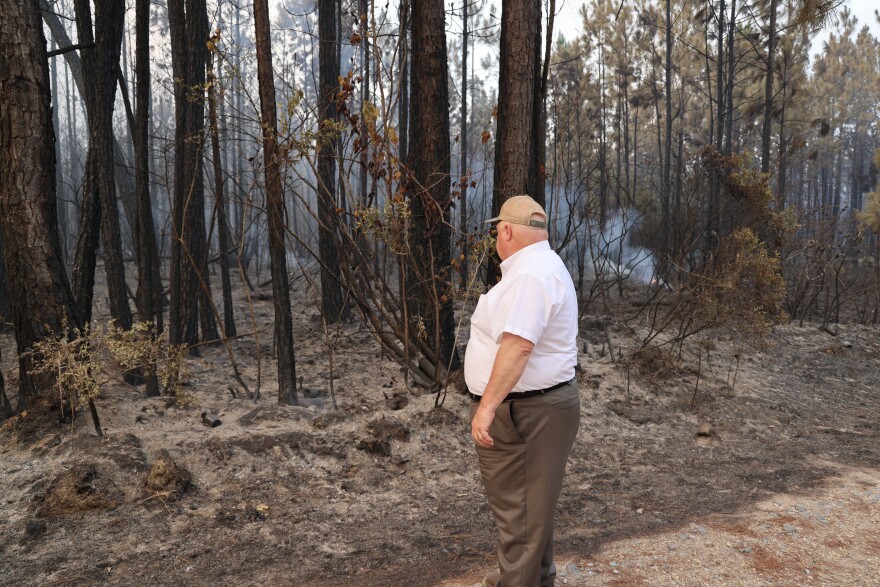A swamp fire that burned in New Orleans East for nearly two months has finally been extinguished.
The blaze intermittently cast smoke over parts of the city for weeks this fall, creating a noxious odor and affecting air quality. The smoke also combined with fog to create multiple “super fog” events that contributed to two multi-vehicle highway pileups that left eight people dead.
The fire, which had been burning on private land between Bayou Sauvage Urban National Wildlife Refuge and the Michoud Canal, was declared extinguished on Monday, according to New Orleans Fire Department spokesman Capt. Edwin Holmes, who also said that all pumps, firefighting crews and equipment have now been removed from the area.
The fire proved difficult for crews to access because it was burning underground, fueled by subterranean peat in wetlands that had dried out during this year’s exceptional drought. NOFD led an effort that included pumps from the city’s sewerage and water board and the U.S. Army Corps of Engineers to flood the area, and involved digging trenches to help direct water toward the flames.
Fire crews were only able to quell the fire after weeks of pumping water to the area, sending workers to dig out smoldering cypress stumps by hand, and with help from a rainfall event this past weekend that dropped over five inches of rain on New Orleans, according to data from the National Oceanic and Atmospheric Administration’s Applied Climate Information System.
For New Orleanians, the swamp fire was the latest reminder of the record-shattering year of wildfires that Louisiana has endured. The state saw over 1,400 fires that burned a total of nearly 60,000 acres, according to data from the Louisiana Department of Agriculture and Forestry — more than five times the average number of acres burned annually between 2007 and 2016.

Louisiana Department of Agriculture and Forestry Commissioner Mike Strain said the state has had to mobilize “every resource we have” to fight wildfires this year.
“This is not over,” he said. “We are getting a reprieve, and we are very thankful for the rain. But it [whether the fires continue] will really depend on the weather patterns as we move forward.”
Fall and spring are typically Louisiana’s driest seasons. As of Nov. 30, the U.S. Drought Monitor showed that a majority of the state remains in the most severe category of drought.
Louisiana state climatologist Barry Keim said this year’s remarkable heat, drought and wildfire was brought on by a convergence of three factors: the El Niño weather pattern, climate change and natural variability. Those factors combined to create what he called a worst-case scenario and one of the hottest and driest summers on record.
“I can’t imagine that we will have another summer like this one anytime soon,” said Keim. “We shattered the previous records by margins that are just not common.”
In New Orleans, those records included 36 days when the temperature did not fall below 80 degrees and 17 days when the temperature topped 100. Without more rainfall in December, 2023 could also be the city’s driest year on record, according to data from NOAA’s Applied Climate Information System.
Keim said he doesn’t expect a repeat of such extreme weather in the near future. But, he said, “Climate change is reloading the dice, and it's making summers like we just had more likely to occur.”
The statewide burn ban was lifted in late November, but local bans may still apply in some areas. The state agriculture and forestry department is urging extreme caution when making a fire, particularly when burning a debris pile. Strain said that debris piles should be lit around 10 a.m. -- never in the evening or night -- and kept under constant supervision until they are extinguished.


